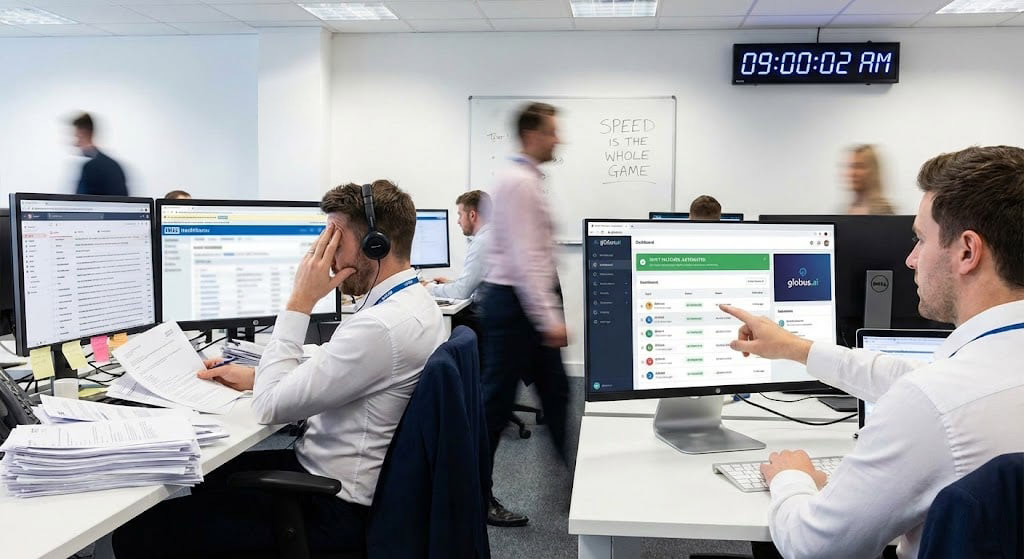
Rota software 101: everything you wanted to know about employee scheduling solutions
Do you find yourself regularly spending hours manually creating a staff rota, managing time-off requests, and keeping on top of shift patterns? You need rota software.
This new HR solution has benefits far beyond your HR and talent department. Investing in employee scheduling software will drastically cut the time needed to assign and communicate shifts, improve the visibility of work across your teams, and help you optimize your workforce. All within one centralized system.
What is rota software?
Rota management software enables businesses to easily schedule who is working, when, and where. This information can then be shared with workers, so they know exactly when they’re needed and can request any changes through the same system. Any changes made are immediately reflected across all records — which cuts human error down and makes it easier to track who is working, who is available to work, and who is on leave.
Types of rota software
There are different types of staff rota software depending on what they specialize in. Broadly speaking, they will fall into one of three categories:
HCM (Human Capital Management) - this software is usually used by HR departments to streamline people management processes like recruitment, payroll, HR admin, training, performance management, and benefits. It’s usually found in large, global organizations as it requires a significant investment in setup, installation, and company-wide training.
Time and attendance (T&A) - this tool is solely focused on on-shift employees. It collects data on who has clocked in, when they arrived, and when they left. It supports payroll systems and ensures workers are paid for exactly what they’ve worked.
Specialist solutions - increasingly there is specialist rota scheduling software that works alongside HCM and payroll solutions to bring greater intelligence and automation to rota planning. These solutions usually support more agile organizations and can make a workforce more responsive and flexible as organizational needs change. Globus AI, for example, works to support rota management by recommending people for shifts depending on their skills and availability.
The benefits of using shift rota software
The most obvious benefit of having a shift rota planner is the amount of manual work (and time) that can be cut. Automation will decrease this further, by intelligently recommending workers based on their past experiences and availability. Paper systems are prone to human error and miscommunication, whereas having a rota system that’s accessible to everyone can improve communication and transparency. It also makes staffing more scalable. Manual rota creation is time-consuming but with rota software, you can assign roles and send communications in just a few clicks — no matter how many workers are in your talent pool.
One Globus AI client has experienced the huge time and resource savings first-hand, "I just sent out a joint message about vacant shifts on Saturday, and as early as Sunday the staffing schedules were virtually ready, completely automatically! This is going to save me a lot of time and manual work in the future and I am really excited about this development!" explained René Hedera, HR Consultant at Personalhuset Staffing Group Norway.
Another perk of using rota planning software is assigning roles more equally among employees. This can reduce working fatigue and ensures nobody is working significantly longer hours. It can also help with overtime costs. Some staff rota systems can additionally help you manage time-off requests so people take the vacation time they are entitled to and you’re not left understaffed.
The best rota apps put workers at the center — empowering them to set their shift and role preferences, time-off, and weekly requests. When people are doing work that suits them, they are more likely to be productive, engaged, and retained.
Main features
Some of the main features to look out for in your rota planning tool are:
Scheduling - the ability to set staff schedules and display them for managers and teams to see and change.
Availability - hiring managers can quickly see available workers.
Compliance - meeting local and industry-specific requirements like a maximum number of hours worked, holiday and sick leave, and credentials.
Time capture - seeing when someone has clocked in and out of a shift.
How to pick the best rota planner
Every organization is different and a rota solution that suits one workforce may not suit another. That said, there are some best practices to follow when choosing your rota software.
- Goals
Make sure your chosen rota scheduler aligns with your organizational goals. For example, if you want an easy way to avoid understaffing, choose a tool with good availability and time-off functions.
- Innovation
Invest in a vendor that demonstrates consistent innovation to remain at the forefront of any industry changes and trends.
- Usability
Look for a system that makes it easy to build staff rotas and make changes. Consider how it performs for your entire team, especially if individual workers will also use it to request changes.
- Integrations
No single system can achieve everything so look for a work rota planner that integrates seamlessly with your other systems. This will save you time and also improve data accuracy.
Your greatest asset
Your people are your organization’s greatest asset. Investing in rota software will ensure the best people are in the right roles, at the right time, based on their skills and availability. Simultaneously, the right rota planner will free your team from manual scheduling, improving productivity and scalability.




